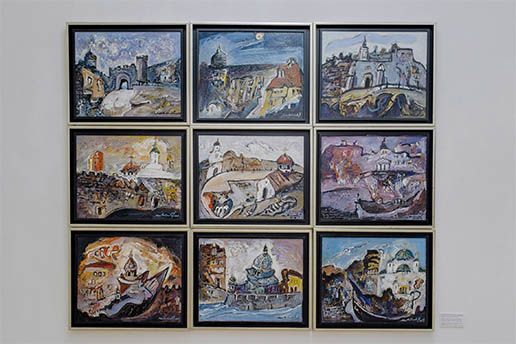KONTAKT
Удружење грађана
Digital Innovation Solutions
Војводе Степе 343
11000 Београд
Србија
CONTACT
VR PHOTO TEAM
2 srpske armije 5
11000 Belgrade
Serbia
Gallery 212
20.03.2018. to 03.04.2018.
www.galerija212.co.rs
This grand city has, as it seems, always been like this: torn apart, spilled, exactly as if it had never existed but is perpetually being created, extended and recovered. On one end, it stems and grows, and on the other, it withers and decays. It is always moving, undulating, never standing still, it does not know what it means to be tranquil and silent. The city on two rivers, with high ground and a lot of wind.
Иво Андрић

As a theme, Belgrade has been present in the creation of numerous artists, but this particular point of view has been given to us by Momčilo Moma Antonović, an authentic creative personality who has, ever since in the late 1950’s he first saw this town that enthralled him, spent several decades skillfully expressing his love for it on canvas. The exhibition Belgrade on Waters by Momčilo Moma Antonović, encompassing the latest cycle of his works and split into three segments according to the time when they were created (paintings made in 2015; in 2016 and 2017; and in late 2017 and early 2018), offers his view of the ideas, techniques and esthetics of his creative process over this three-year period.
Moving between perception, intellect and emotion, in his creative process Moma transposes what’s seen into fragmentary representations of the inner experience, insisting both on the artistic and the spiritual quality of the work of art.
Compositions of strong color, with numerous details – symbols of Belgrade, dominated by diagonals which create a dynamic and dramatic quality (created in 2015) are followed by those later compositions with calmer colors, brighter pallet, reduced details, dominated by the St. Sava Temple as the main symbol of the town and its spiritual axis.
Along with the certain changes in his creative process that can be tracked through the segments of this cycle, Belgrade on Waters has one predominant characteristic: the unity of the painting, reflected in the structural integrity of its shapes and motifs, where each prescribed form of expression doesn’t stand on its own, but in relation to the overall meaning of the painting and its theme.
Just like Belgrade is always being created, extended, so Moma continues to build its representations. If we agree that an artist spends his whole life working on a single painting composed of many parts, then this cycle would represent a unified picture of Belgrade, composed of many fragments, tiny pictures, in a dialogue between the outer world and the inner world of the author, and in the hope that in this town a man can still find rest and protection from all that has been and that still may be.
KONTAKT
Удружење грађана
Digital Innovation Solutions
Војводе Степе 343
11000 Београд
Србија
CONTACT
VR PHOTO TEAM
2 srpske armije 5
11000 Belgrade
Serbia